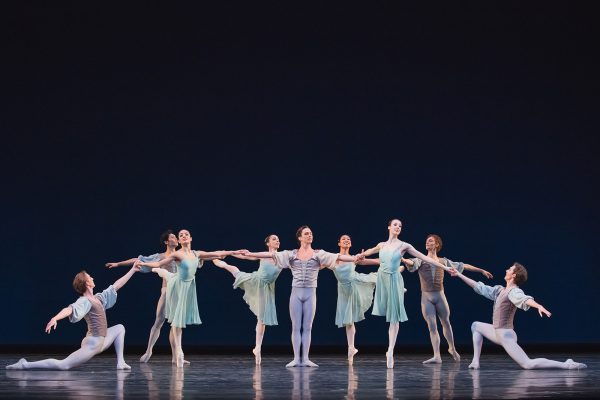Dave St-Pierre is dying. It’s not a secret. Over the last many years, he’s been up-front about it in interviews and on stage. He suffers from cystic fibrosis, a progressive and degenerative disease affecting the mucous-producing glands (in his case the lungs) that will cut his life short. Perhaps most importantly, audiences are very much alive to it. The house at Tangente was packed for the week-long run of “Over My Dead Body”, and extra shows were added.
In the program notes, St-Pierre writes, “Between (being born and dying), I masturbate, I come, I clean up the mess, and, when I have time, try to de-dramatize my existence. If I can’t do anything with any of this, I’m already dead.” On stage, in the opening moments, St-Pierre stands before the crowd, straps on his oxygen, and announces, “I will never live a long life.”
Criticizing St-Pierre’s work in the context of his impending death is a difficult task. If he has months or years, I have no idea; I say “impending” because I’m just going by the content of his show. The situation reminds me of the controversial challenge posed by former “New Yorker” dance critic Arlene Croce – known for her dense, intensely physical, often technical, descriptions of works – when she decided to pass on attending Bill T. Jones’ performance “Still/Here”, but still wrote an infamous, impassioned critique of the show, at the same time tracing the development or, perhaps as she saw it, the disintegration, of Jones’ work. (“Still/Here” incorporated video clips of real people talking about their serious, sometimes terminal, illnesses. These were people whom Jones involved in workshops in his research phase). Croce called the dance work “victim art”, and wrote, “by putting dying people into his act, Jones is putting himself beyond the reach of criticism.” Further, she added, “I can’t review someone I feel sorry or hopeless about.”
Well, I won’t re-hash the entire Croce firestorm, but it’s important to say that all over North America cultural critics and the arts community weighed in, some stimulated by the discussion, others infuriated – and I think justifiably so – with the position that she took, and her comments, if only because she never actually went to see the show. (So many people talking about dance, glory days!)
To put things into context, I never saw the stage version of Jones’ production, but rather snippets in a television documentary produced by the PBS journalist Bill Moyers. From that program and what I read elsewhere, I understood the show to have focussed on the human spirit. For her part, Croce, who also took the opportunity to slam political correctness, education and community work in the arts in her wide-ranging commentary, puts forward some provocative ideas: “I think of him literally as undiscussable; the most extreme case amongst the distressing many now representing themselves to the public not as artists but as victims and martyrs.”
Let’s be clear: I went to see St-Pierre in his latest performance in Montréal, and it bears mentioning that I’ve been going to see his work for many years. I do, however, think that reviewing the piece brings up some of the same issues as the tempestuous Croce/Jones debate. St-Pierre has been managed expertly in the last few years: his work is seen across the globe and he’s gaining acclaim show by show, so that’s all good. Some problems persist in his work, editing being chief (he doesn’t know when to stop) and, pushing back some of the hyperbole surrounding his output and the wild applause he receives, perhaps nipping some of the narcissism would be helpful.
About fifteen years ago, I featured St-Pierre and colleague Nancy Leduc in a cover story on dance-makers to watch. Going back to that copy is interesting. It reveals that, even at that time as a relative newcomer, St-Pierre, wasn’t interested in conforming to any formulas at play in Montréal’s dance community. He and Leduc talked about pushing creativity to new and far limits. He spoke about his multi-faceted possibilities as an artist, and seemed very much ready to take on the world. Also informative is how I comment on his stature: “St-Pierre’s a small guy, and he’s been overlooked for a number of plum (dancing) jobs. But his agile, compact body and his boundless energy, can fill a large stage.” The same holds true today: he’s got a strong presence on stage. Likewise, it was clear that both he and Leduc were both ready to test and challenge their talent. “The future is us,” St-Pierre commented.
In short, I’d say St-Pierre has fulfilled his destiny. Earlier in the season he and his work “La Pornographie des Âmes (Bare Naked Souls)” played at Dusseldorf’s Pina Bausch International Dance Festival, on the same footing as William Forsythe and Louise Lecavalier. Not bad. Another factor that plays in his favour: his blatant embrace of shock, titillation and humour, which enamors so many people. He is unmissable in my books. Like I said in these pages just a few years ago, with the performance of “Un peu de tendresse bordel de merde (A Little Tenderness, For Crying Out Loud!)”, St-Pierre doesn’t want to make the show a comfortable outing. He really does want to confront the ugliness and the unpleasantness of human relationships, and yet under all the outrageous behaviour he is, I always feel, searching for sentimental love. Breaking the fourth wall is always part of a St-Pierre performance. He likes confrontation, excess, and with some beauty thrown in for good measure, you get an idea of his shows. Moreover, the rough energy of his work and the implication of a wild side, gives him cachet. And depending on where he’s playing, some people make a big deal about the ever-present nudity.
As has been the case for the last number of years, the Cult of Dave moves ticket sales. With “Over My Dead Body”, the choreographer assembles a Céline Dion impersonator (Julie Perron, who nails the diva’s verbal and visual ticks, but is woefully unequipped for the lip-syncing, particularly the English pop ballad), and one of “the blonds” from the “Un peu de tendresse” show (Éric Robidoux, decked out with a “dumb blond” wig, five-o’clock shadow and nothing else except for a gorilla outfit he sports for a brief scene), who flutters and shrieks, addressing the crowd and always pushing that fourth wall.
All of the dialogue (the show is text-driven, not dance-centred) revolves around St-Pierre’s mortality. Bare white light illuminates the set, which is made up of a white dance floor and white tarps as wall covering. Upon seeing St-Pierre pale, lying on the floor with his respirator next to him, the “blonde” yowls, “He’s cold! Maybe he’s dead!” When the Céline character enters – and she does so with great flourish against a blazing wall of lights, with cannon volleys as soundtrack (kudos to Cédric Lord, who conceived of the wall, lighting designer Anne-Marie Rodrique Lecours, and composer Nans Bortuzzo) – she purrs at St-Pierre, “Poor Dave. How are you? I know that you have dark ideas.” (Céline Dion is the spokesperson for the Cystic Fibrosis Foundation.) St-Pierre, looking impish, coughs, shrugs his shoulders, and feigns mild embarassment, which prompts a few chuckles from the audience. A third character, a lover/friend (Alexis Lefebvre) heightens the proceedings, because, dramatically, they never can actually embrace. People surrounding me gently wept during this scene. Unfortunately, all these characters return to the stage to repeat their shtick, diluting what may have been charming/funny/touching in the first place.
In the final tableaux, St-Pierre walks the terrain of the stage, crossing in lines, while a melodramatic German tune plays. The lights begin to dim and he slowly exits centre stage into a field of lights, and then into the blackness. But before the lights go down completely, he dances ever so briefly (the only real dance in the show), moving his expansive arms, reaching out, spiralling, working the axis of his body in a circumference. Fade to black.
When the cast comes out for the bows, tears are flowing and the audience rises en masse, people dabbing their eyes, filled with emotion.
In an interview in one of the local papers, St-Pierre commented that he was not interested in subtlety, and that he feels that people nowadays are walking zombies, unable to think or feel. Frankly, I’m not sure to whom he’s referring, because many people, artists and non-artists alike, healthy and dying, are thinking deeply, and acting on many issues and ideas. And most don’t wrap themselves in their illness; they just go about doing what they have to do. So while it seems clear that St-Pierre’s health concerns have framed his perspective, the show (decidedly not a documentary) in itself isn’t undiscussable. However, being the arbiter of someone’s artistic work while at the same time seeming to target his or her illness makes the critical task here a challenge.
In responding to St-Pierre’s work, I feel somewhat like what the late film critic Pauline Kael famously wrote about Martin Scorcese’s Raging Bull (replace the “…”’s with choice “f” words): “I know. I’m supposed to be responding to a powerful, ironic realism, but I just feel trapped. Jake says, ‘You dumb …’ and Joe says, ‘You dumb …,’ and they repeat it and repeat it. And I think, ‘What am I doing here watching these two dumb …?’”
That’s kind of the no-exit experience I have watching St-Pierre now.
Equally frustrating, for all his posturing that the show is all about him (and in every understandable way it is), questions about St-Pierre’s personal background and history are just happenstance in this latest production – except for the fact that he has this terrible disease. I wonder if it’s a case of his life details lacking importance within the scope of the piece, or if the retelling of his life story doesn’t serve the work. Forget broad symbolic analysis, what we get is a slice of Dave’s World, on his terms, pure and simple. So with that in mind, the only conclusion I can draw is that self-absorption trumps all, and he’s nobody’s victim.
Two shorter pieces opened the program: Christian Garametter, a talented b-boy from Germany who has worked for the Cirque du Soleil, exhibits stunning dexterity and real poetry of movement in “Since92Till”; and Virginie Brunelle, a recent UQAM graduate, followed with a repetitive, stylized piece on violence and male-female relations for six dancers called “Gastro affective”.
By the way, St-Pierre’s “Over Our Dead Bodies”, the final segment in the trilogy “Sexology and Other Contemporary Utopias”, for a cast of sixty people, will surface in the next year or so.
Tagged: Contemporary, Performance, Montréal , QC





